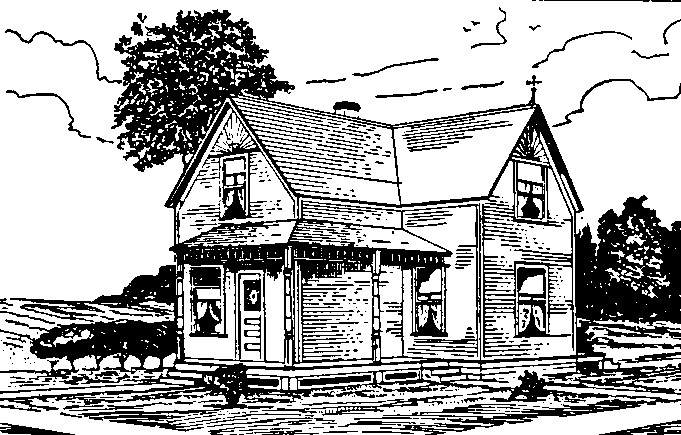After a short stay, Ungemuth and Giezendanner decided to carry their message to St. Gallen, the second largest city in that part of Switzerland. Previously Giezendanner had concentrated on rural or outlying areas. Now he brought his campaign into the camp of the church leaders. Finding hospitality among "awakened" citizens of St. Gallen, Giezendanner and Ungemuth centered their activities about the home of a book dealer name Schopfer. Again, some of the younger clergy proved receptive, especially on Ulrich Abbt. The movement might have gathered strength, but a notorious incident shattered all hope for progress.
On the Monday after Pentecost, a holiday in the Swiss
Church, a young lady name Ottilia Gugin (*2)
interrupted the service with shouting and bodily agitation.
The congregation was thrown into an uproar. Miss Gugin was
attacked, and only with difficulty could the minister restore
order.
Naturally, an investigation followed. Miss Gugin proved to be
twenty-two years old, susceptible to fits of ecstasy at the
thought of the love of God, and a participant in meetings at
the home of bookdealer Schopfer. There she had met
Giezendanner. All the principal figures in the pietist circle
were punished severely. Giezendanner was told he would be
imprisoned if he ever returned to St. Gallen. The minister
Abbt was banned from his pulpit for six months. The
unrepentant Schopfer was imprisoned. Miss Gugin had to
apologize to the Council on her knees and serve a prison
term. In order to prevent such groups from forming in the
future, the authorities strengthened the existing laws
against Pietists.
Strict censorship of books, prohibition of private religious
meetings, confessional loyalty oaths for ministers, and
severe orders against Giezendanner and Ungemuth spelled the
end of Inspirationist activity in St. Gallen.
But Giezendanner was not to be stopped.
*2 Anna Barbara Kunkler
gave testimony (St Galler Synodalakten) and named a tinman
Giezendanner "the other brother".... This was the
reason for the wide spread mistaken identity of Hans Ulrich,
of which there were two (cousins) and they both had a tinman
for a brother.
REF: Geschichte der Evangelischen Kirchgemeinde Lichtensteig
1528-1967 by Armin Müller, Wattwil, 1967
At the end of May 1716, Giezendanner headed for
Zurich, the chief city of the region and the seat of church
government. Here the familiar pattern was repeated. At first
he found friends and followers; among them three young
clergymen; Hans Jakob Schulthess, Hans Kaspar Ziegler, the
son-in-law of a high church official, and former Marburg
comrade named Herrliberger who was now a tutor.
 Then the church authorities, having
heard of Giezendanner's activity elsewhere and remembering
his appearance before them two years earlier, sent him out of
the city. However, he found protection on the estate of a
wealthy farmer in Engstringen, about four miles northwest of
the city. He preached and soon gathered a regular
brotherhood.
Then the church authorities, having
heard of Giezendanner's activity elsewhere and remembering
his appearance before them two years earlier, sent him out of
the city. However, he found protection on the estate of a
wealthy farmer in Engstringen, about four miles northwest of
the city. He preached and soon gathered a regular
brotherhood.
next page